Homemade Cornbread: Doneness Temps and Thermal Tips
Let’s talk about cornbread. It’s a marvelously American food—bread made of maize—that compliments other great foods of our cuisine. What is a bowl of chili without a slice of cornbread? What plate of ribs is not made better with a hunk of crisp-bottomed homemade cornbread?
While box-mix cornbread is tasty, it has nothing on the homemade version. In this post, we want to talk about cornbread and the thermal principles that go into making it right. Did you know, for instance, that cornbread has a doneness temperature? We’ll cover that and more, plus give you a recipe, adapted from SeriousEats, for cornbread that we think you’ll enjoy thoroughly. Keep reading, we’ll get into it.
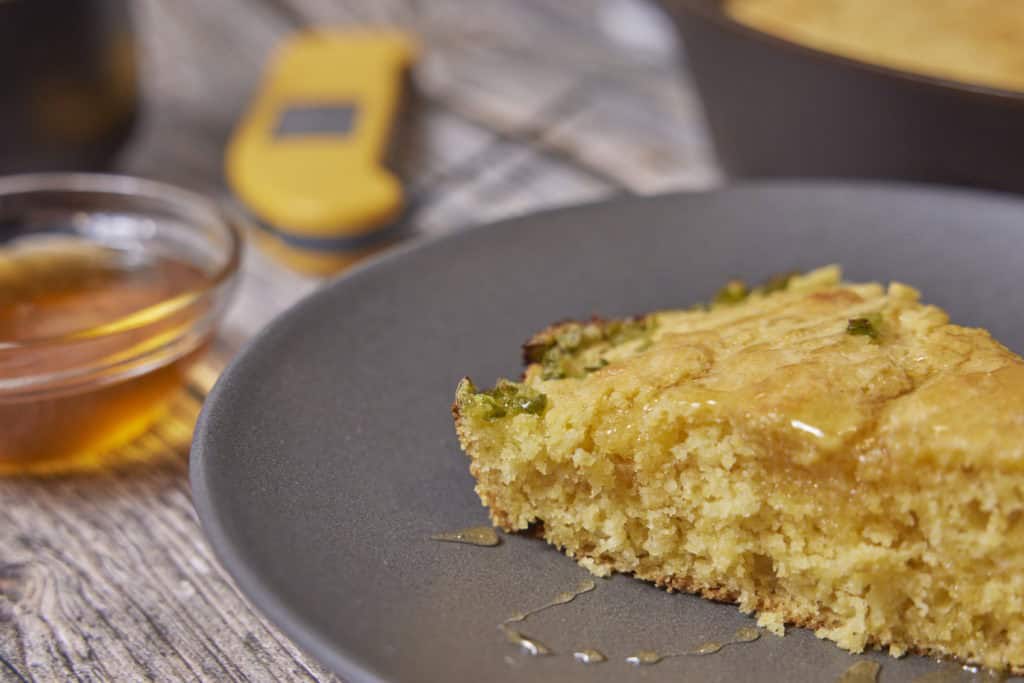
Cornbread: forms and functions
Cornbread’s origins go back even to pre-colonial times, with Native Americans making early versions of the dish before the English and Dutch arrived. When they did arrive, the colonists in the South took to cornbread more than did the Northerners, partly on account of the difficulty of growing cold-weather European varieties of wheat in the hot, muggy climate of the South.
As is the case with many traditional foods, cornbread started as a food of necessity and became a beloved dish as necessity waned and gave way to custom. What began as a simple batter of cornmeal and water, cooked to a dense but filling puck, was lightened with baking powder and enriched with milk, eggs, and even rendered bacon fat.
There is a tremendous debate that rages to this day about the texture, makeup, and flavor of cornbread. There are white cornmeal fans and yellow, dense fans and fluffy, super-moist fans and not. And, of course, there is the most contentious debate of all: should cornbread have sugar in it and be sweet, or not?
We’re not here to answer any of those questions! How you make it (which is probably how your mother and grandmother made it) is a matter of personal and regional taste. There are strong arguments—historical, cultural, genealogical—for all the various styles, but none of the styles vary in their core purpose: To fill you up and help you clean your plate.
Yes, cornbread is filler! It’s what you eat that fills your stomach so the meat can stretch a day further. And while it doesn’t mop sauce up like a sturdy, spongy piece of sourdough, but it can soak up pot likker from a helping of collard green like nothing else. Even though it’s crumblier than some what breads, it’s still a great way to make sure you get every last bit off your plate.
Skillet cornbread
The version we’ll be making here is one that is somewhat sweet (not as sweet as cake, mind you), quite moist, and baked in a hot cast-iron skillet. Skillet cornbread is a subgenre, and one of our favorites. Adding the batter to a hot, hot pan with plenty of butter in the bottom of it makes the crust crisp, brown, and deliciously toasty.
To get that crispness, we need a hot and oily surface. Put your cast-iron skillet in the oven as you preheat it. When the oven is fully preheated, put a good dollop of butter in the bottom (2–3 Tbsp) of the skillet and let it melt and even brown a little. Remove the skillet very carefully from the oven and pour your batter in. It will sizzle immediately and start to puff around the edges. This is perfect! Put the skillet back in the oven to cook the rest of the way.
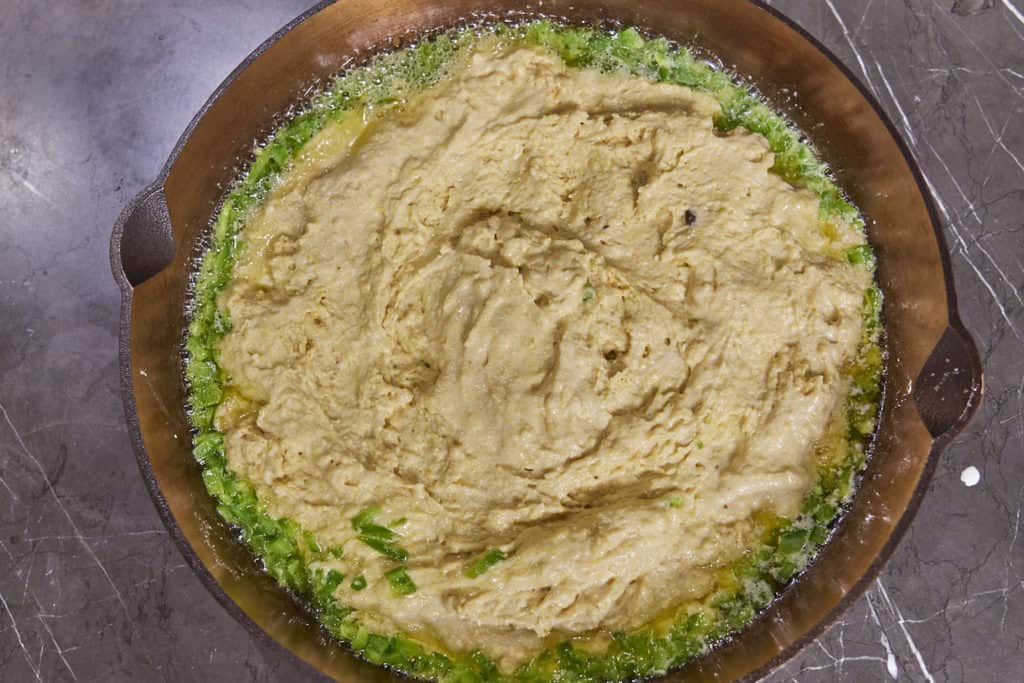
(Note that we also put diced jalapeño pepper in the skillet before we added the batter. This is both optional and exceptionally tasty.)
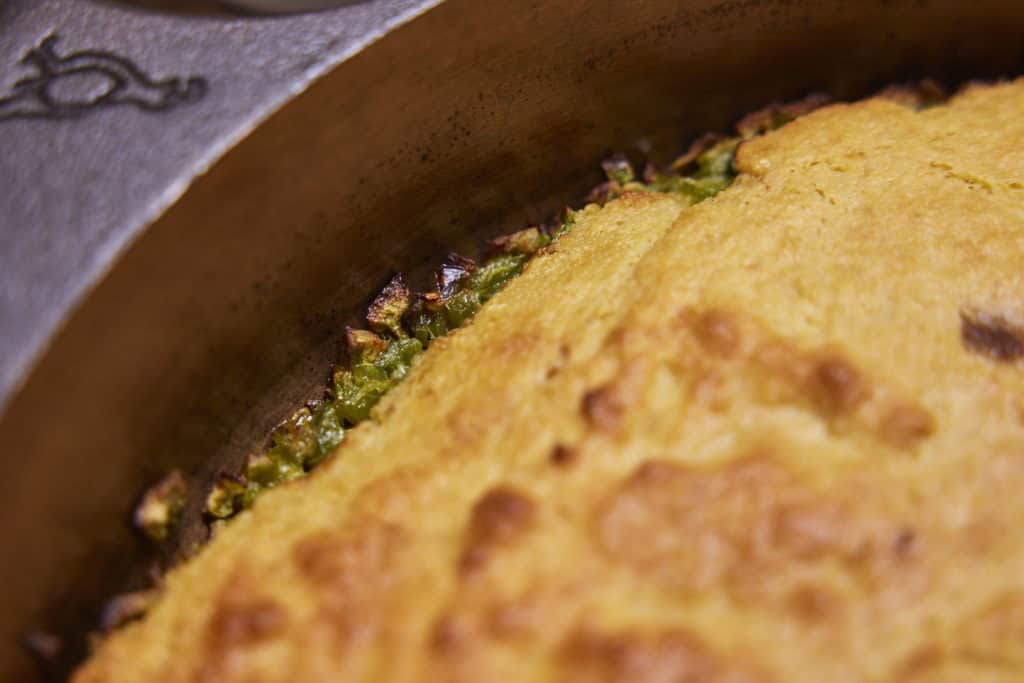
Cornbread doneness temperature
Cornbread has a doneness temperature. That’s the first bit of news to cover. If you undercook it it will be doughy, obviously, and if you overcook it it will be too dry. Where is the sweet spot? 200–209°F (93–98°C). You can check that temperature with your Thermapen® ONE, which is fast enough to give you a true reading without letting the cake cool too much if it isn’t done yet. Insert the prober all the way through the center of the cake and pull it up slowly, looking for the lowest temperature you see. If it’s in your target temperature range, it’s good to go! (You may find that you have a preferred exact temperature for your favorite recipe. If so, write it in your recipe card so future generations can get it just right!)
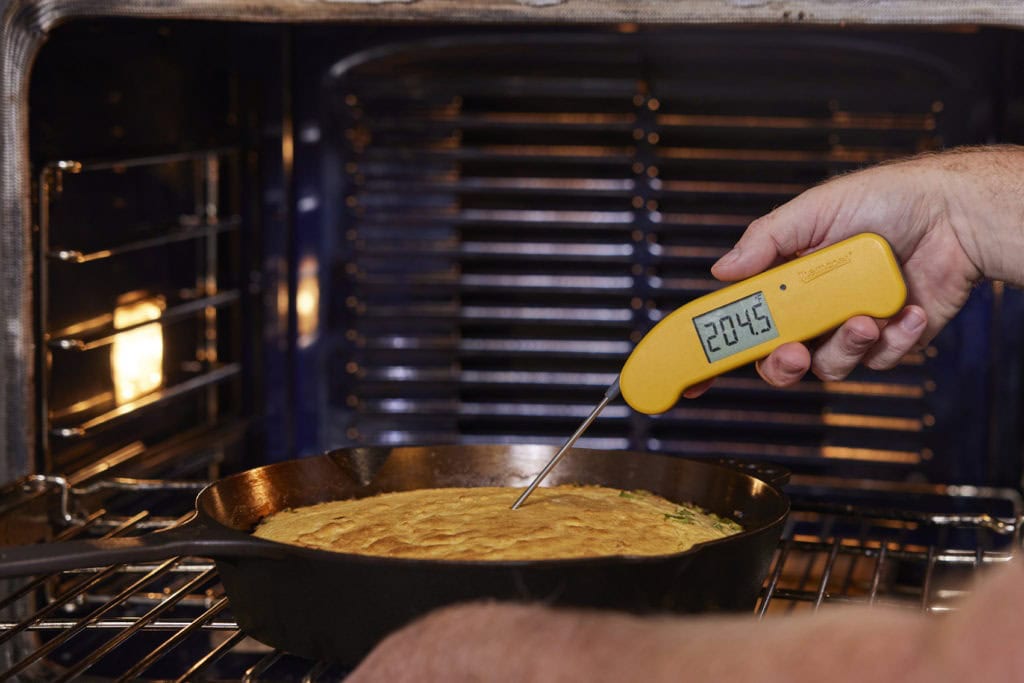
Relying on an actual measurement like temperature instead of a toothpick test will inevitably lead to better, more consistent results, and less and less leftover conbread.
No matter how you make your cornbread, sweet or not, fluffy or dense, the same thermal principles apply. For a crispy, toasty bottom you need a well-heated pan with plenty of thermal capacity, and for perfect doneness you need the internal temperature to be between 200 and 209°F (93 and 98°C). And whether you’re having it with chili or butter and honey, it’s going to be delicious if it’s properly cooked. Make up a batch today, and share the tastiness. Happy cooking!
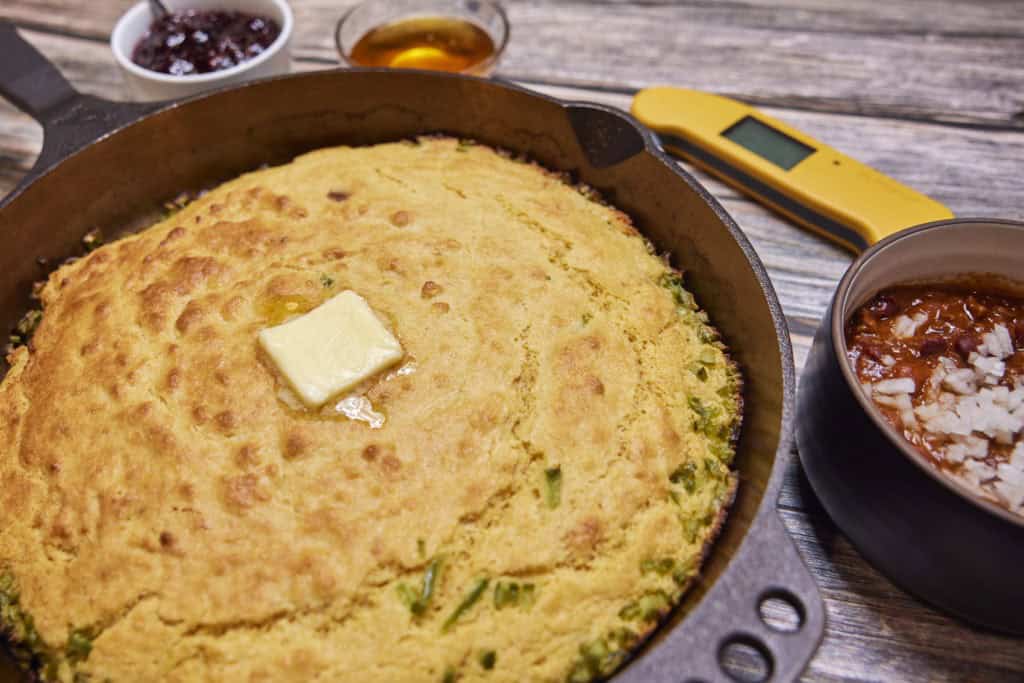
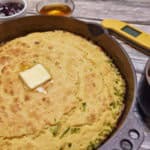
Homemade Cornbread Recipe
Description
Homemade cornbread, adapted from SeriousEats’ recipe.
Ingredients
- 8 Tbsp butter, divided
- 1 C cornmeal
- 1 C all-purpose flour
- 4 Tbsp brown sugar
- 1 tsp kosher salt
- 2 tsp baking powder
- 1/4 tsp baking soda
- 2 eggs
- 6 oz (3/4 C) sour cream
- 1/2 C cultured buttermilk
- 1 jalapeño pepper, finely diced (optional but very tasty)
Instructions
- Preheat your oven to 425°F (218°C) with a 10″ cast-iron skillet inside of it.
- When the oven approaches the end of its preheat run, at about 405°F, put 2 Tbsp of the butter in the pan and continue to heat.
- Brown the other 6 Tbsp butter in a small pan on the stove and set aside.
- In a large bowl, combine the dry ingredients: meal, flour, sugar, salt, baking powder, and baking soda. Whisk to combine.
- In another bowl, whisk together the sour cream, buttermilk, and eggs.
- Pour the wet ingredients into the dry ingredients and stir until just combined.
- Pour the reserved 6 Tbsp browned butter into the batter and stir to combine.
- When the skillet and oven are fully preheated, remove the skillet from the oven very carefully. Add the diced pepper to the skillet and pour the batter in.
- Return the skillet to the oven and cook.
- Start testing the internal temperature of the cornbread with your Thermapen ONE after about 20 minutes. Look for a temperature no lower than 200°F (93°C) but no higher than 209°F (98°C).
- If the cornbread is done, remove it from the oven and allow it to cool somewhat before either turning it out of the pan or slicing and serving from the skillet.
- Serve and enjoy!
Shop now for products used in this post:


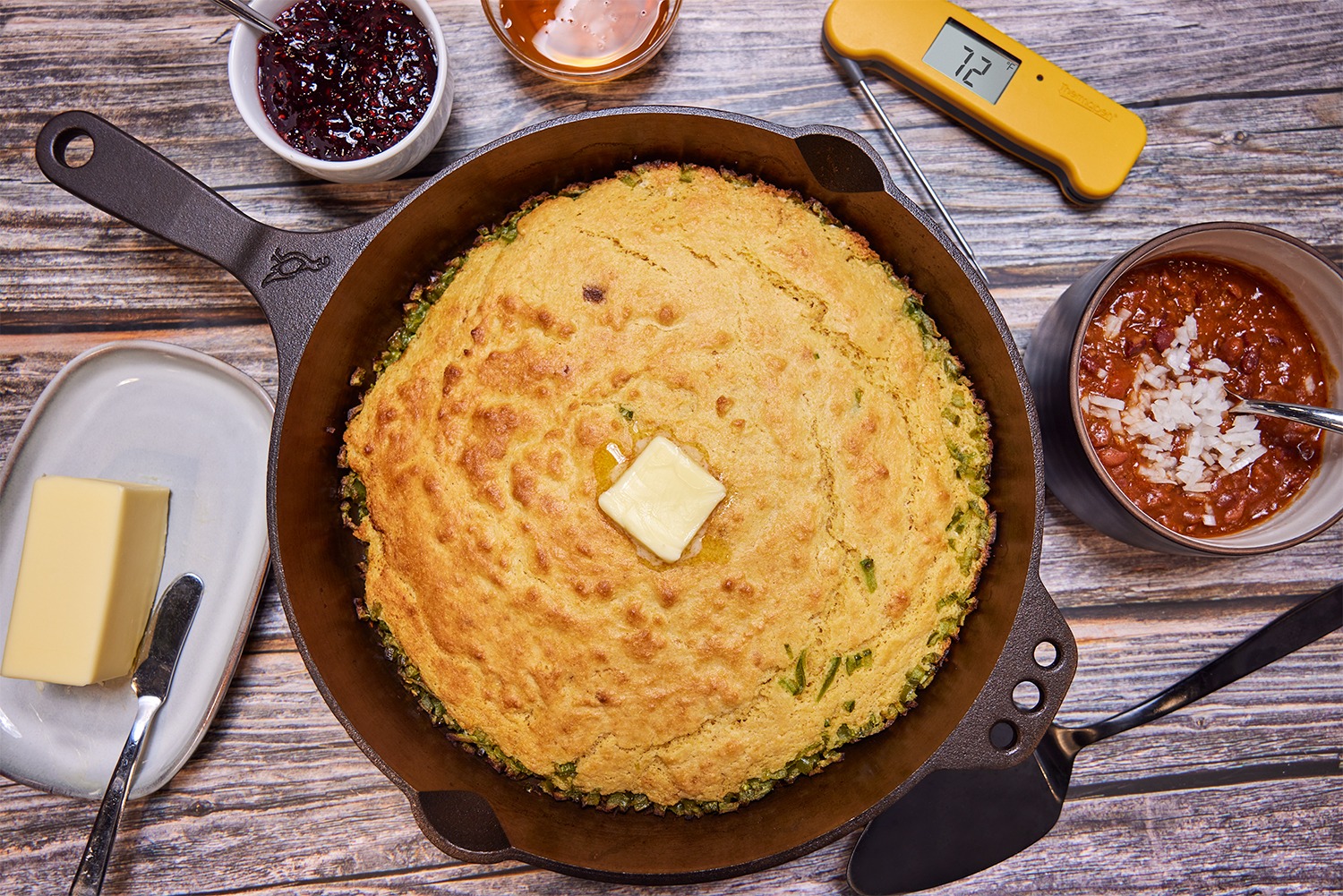
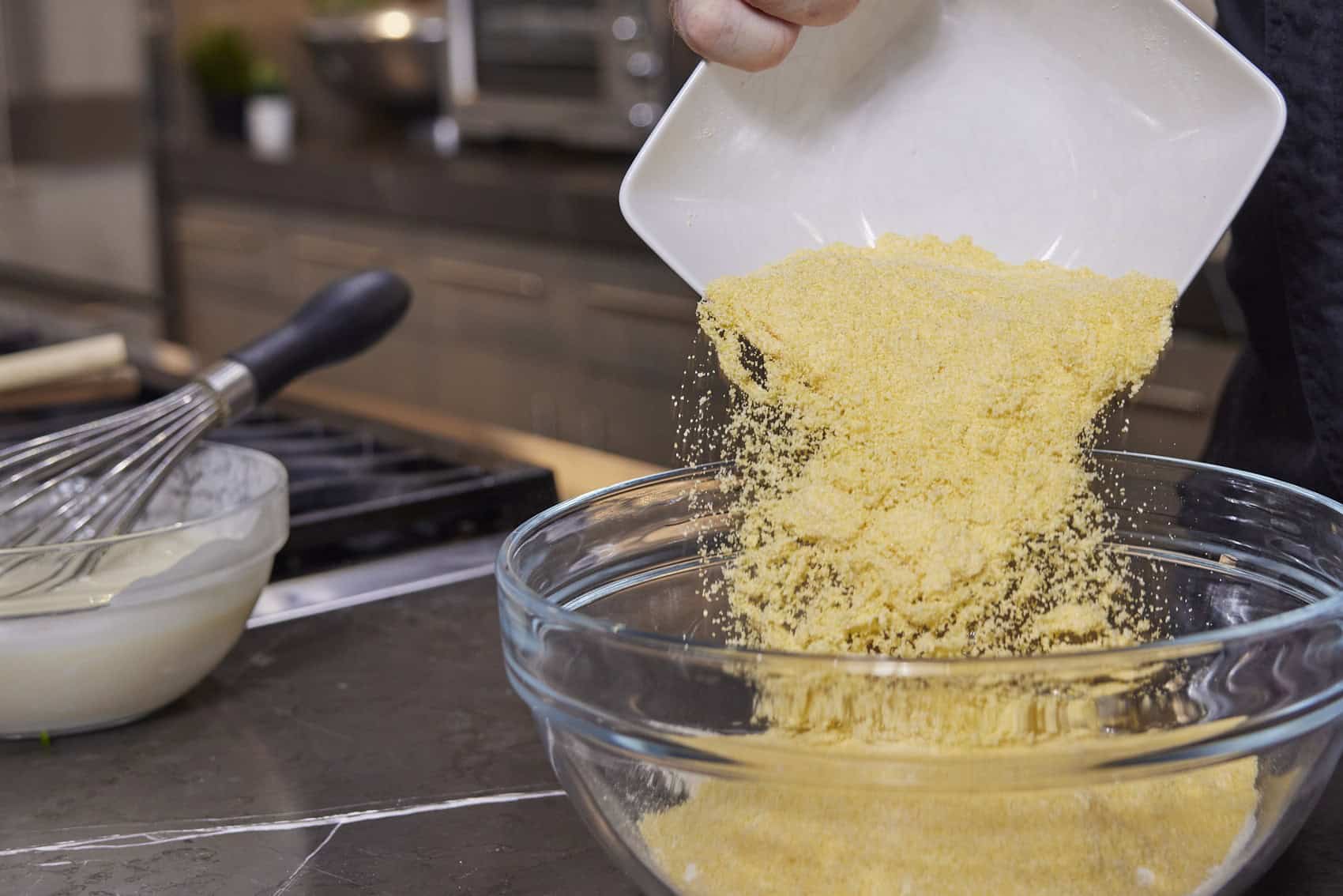
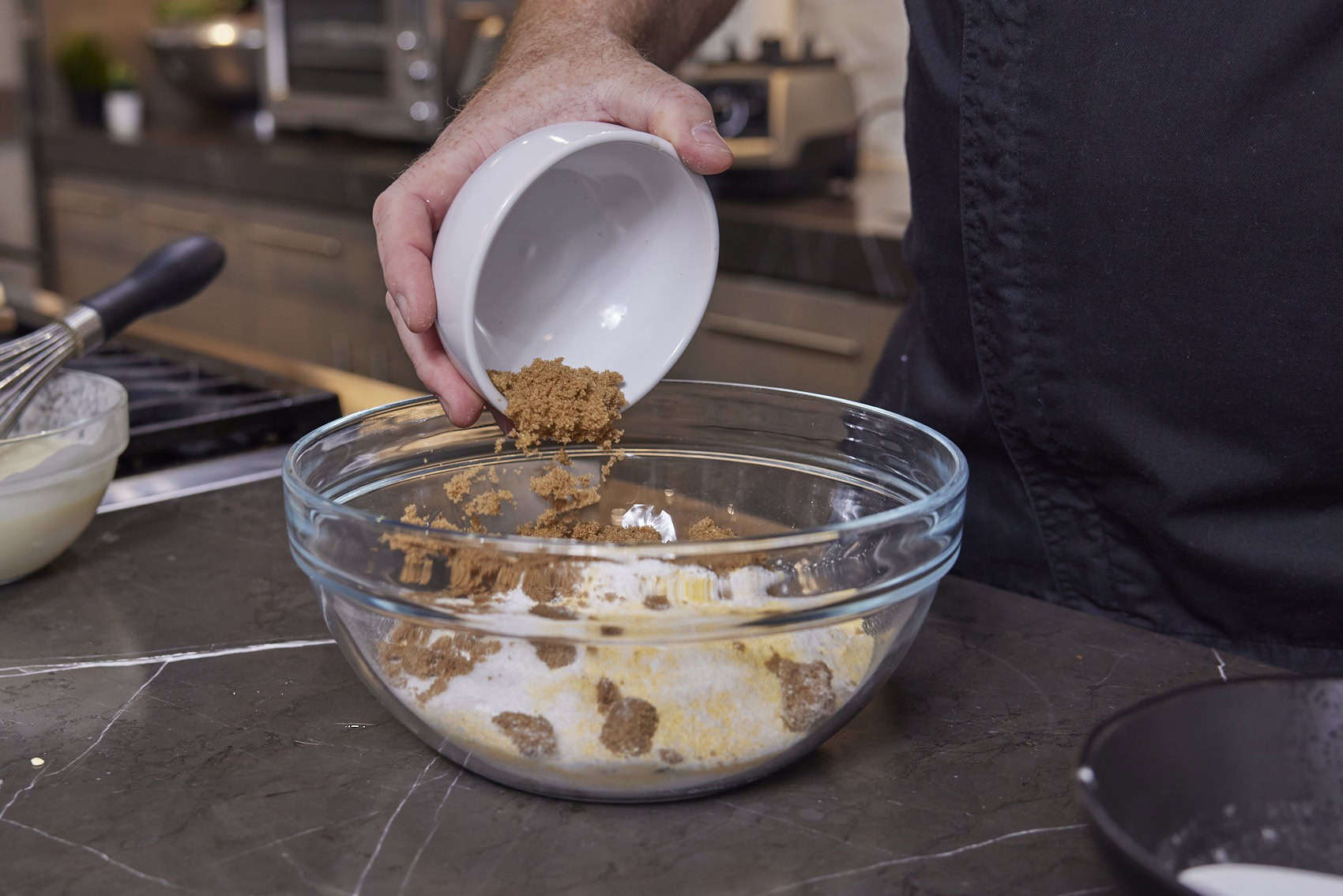
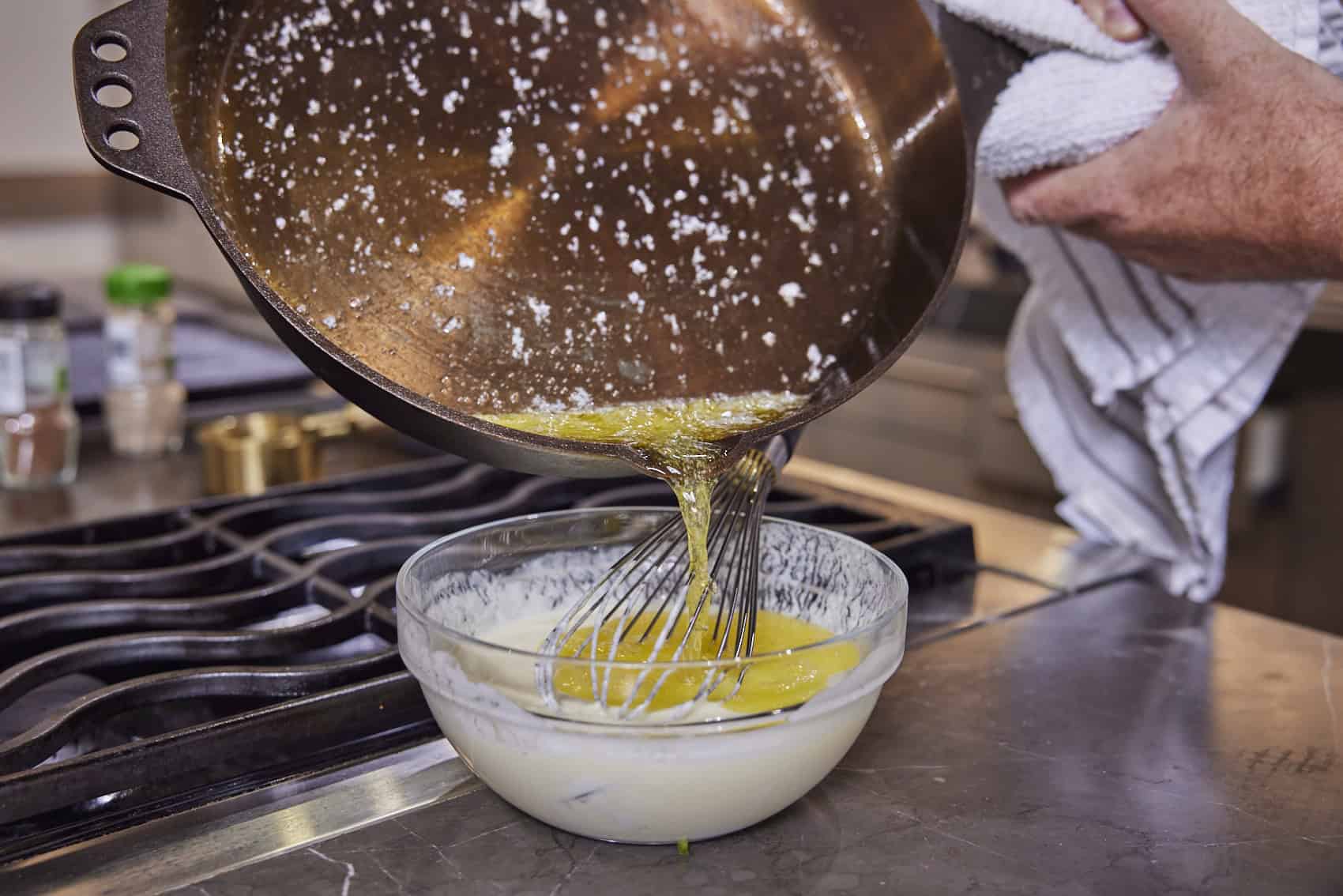
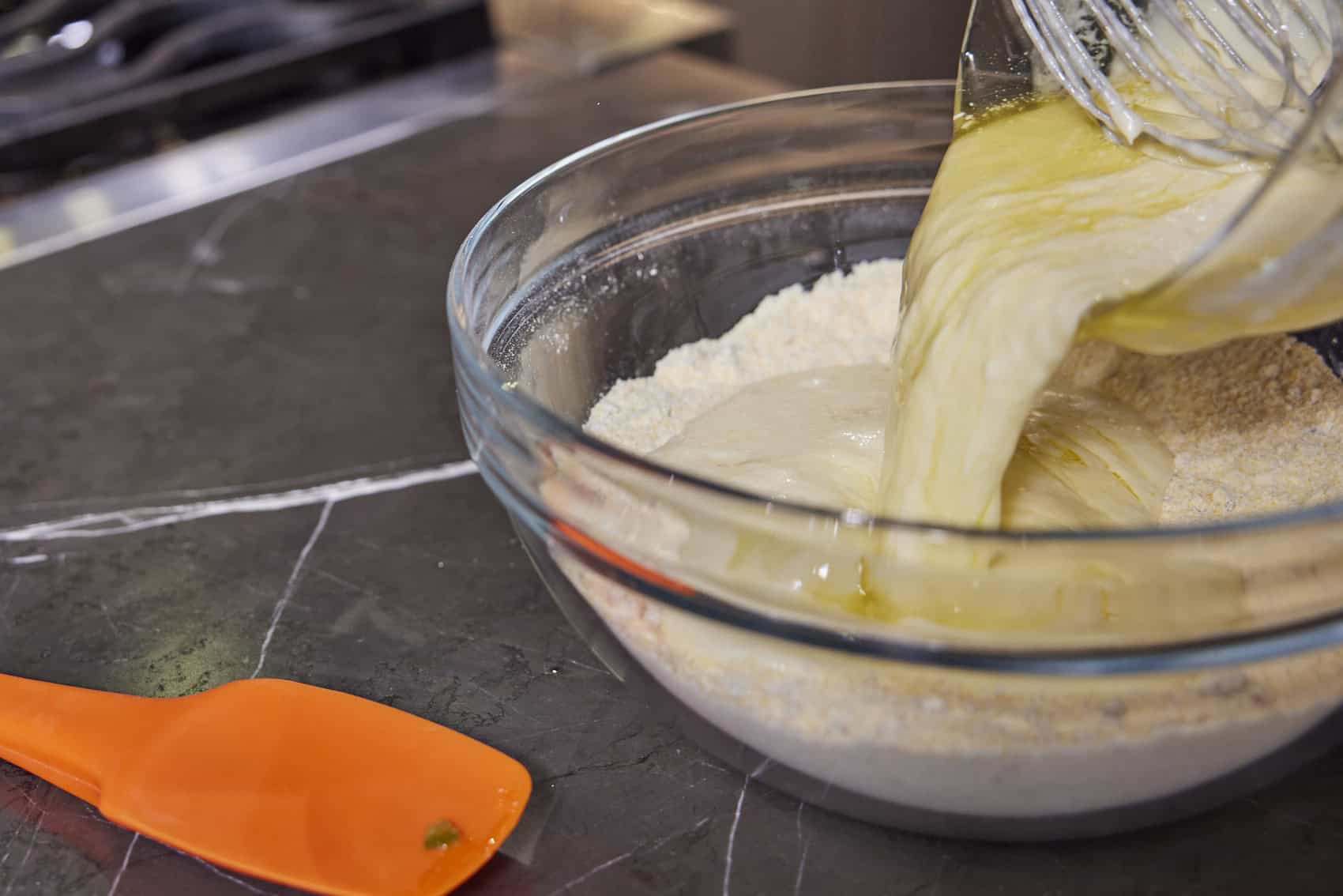
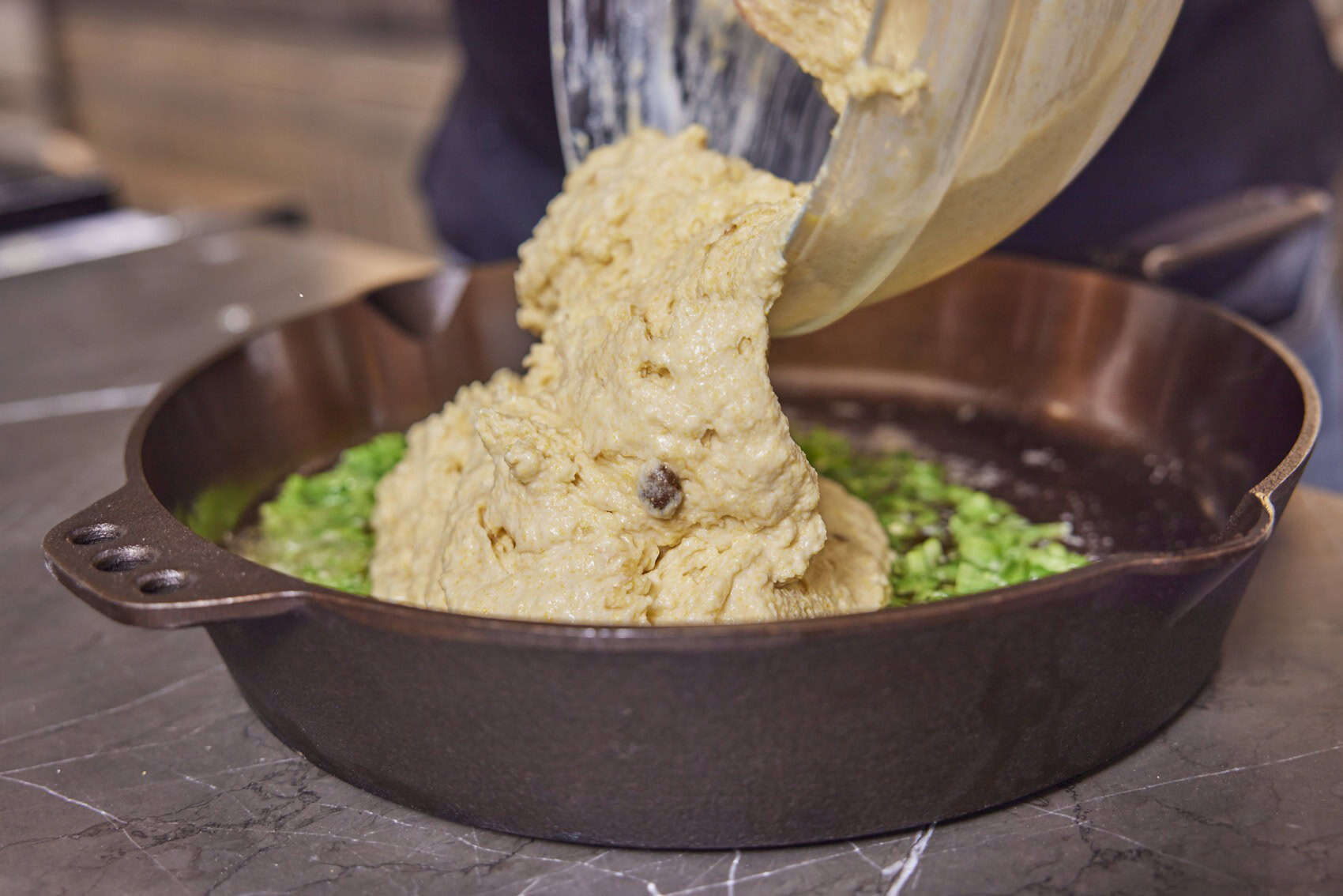
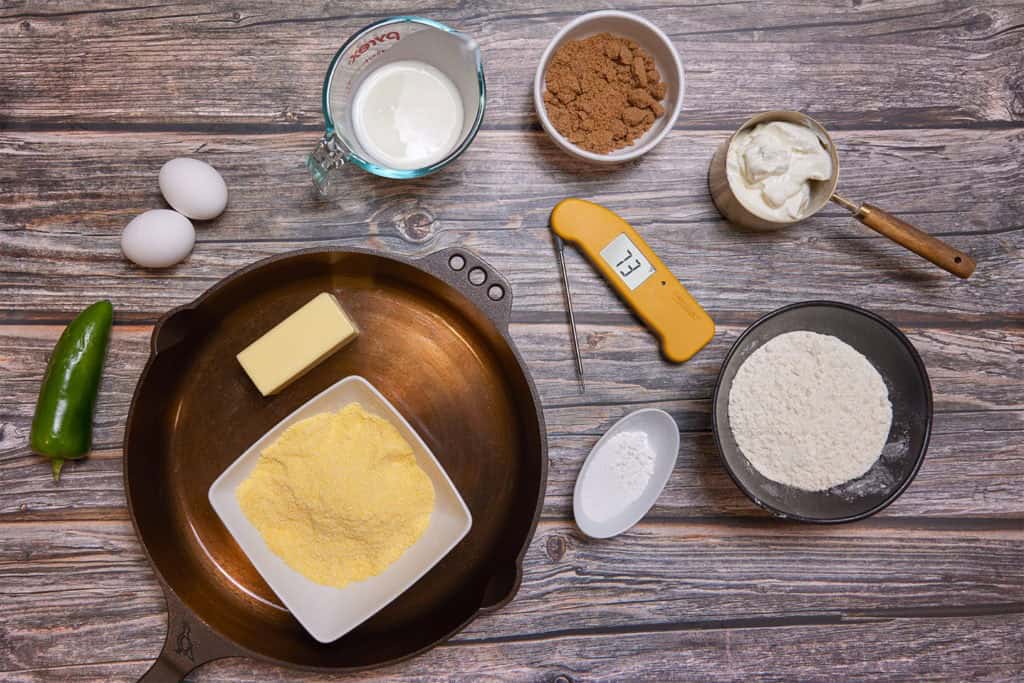

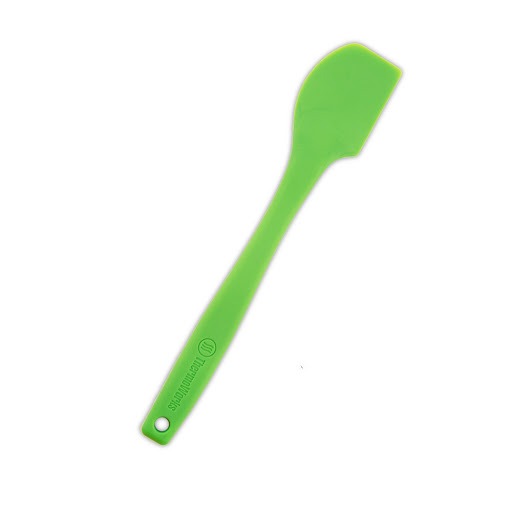
Ingredients list has a typo. Says “2 tsp” but not of what and also, Directions say to add eggs but number of eggs not listed in ingredients.
I corrected it to 2 eggs, not 2 tsp!
After the 1/4 tsp baking soda, and before the 6 oz sour cream, there is a blank on the ingredient list where there should be 2 tsp of something. What is that something?
It should be 2 eggs, not 2 tsp of anything!
1/4 tsp baking soda
2 tsp
6 oz (3/4 C) sour cream
2 tsp of what???
It’s two EGGS! I fixed it in the recipe.
This is super similar to Alison Roman’s minus the baking soda, +1/4 tsp salt, temp 400F, melting but not browning the butter. She also suggests 3/4 c. Mayo in place of sour cream. I made her recipe with the mayo and was blown away. I’m trying her recipe tonight with sour cream. Brown butter had crossed my mind so I’ll try yours next. Your recipe looks solid. Life is too short for bad wine and bad cornbread right?
Yes it is!